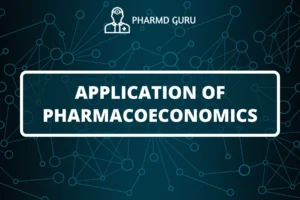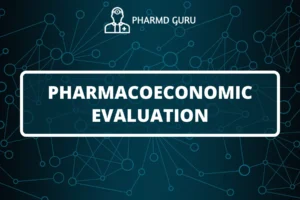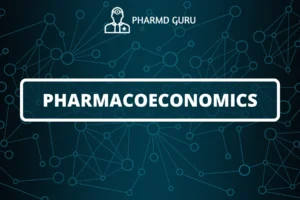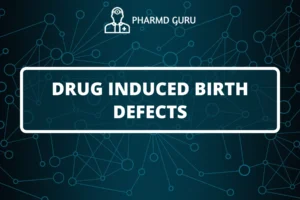Spontaneous reporting is a cornerstone of pharmacovigilance, the science and activities related to the detection, assessment, understanding, and prevention of adverse effects or any other drug-related problems. It involves the voluntary reporting of suspected adverse drug reactions (ADRs) by healthcare professionals, patients, and consumers to regulatory authorities or pharmaceutical companies. Spontaneous reporting plays a vital role in identifying and monitoring medication safety signals, contributing to patient safety and the overall assessment of drug benefits and risks. In this article, we will delve into the significance of spontaneous reporting, its process, strengths, limitations, and its crucial role in ensuring medication safety.
SCROLL DOWN TO THE BOTTOM OF THIS PAGE FOR ACTUAL NOTES.\
TABLE OF CONTENTS:
- Introduction: Importance of Spontaneous Reporting in Pharmacovigilance
- Process of Spontaneous Reporting
- Healthcare Professional Reporting
- Patient and Consumer Reporting
- Strengths of Spontaneous Reporting
- Limitations of Spontaneous Reporting
- Contributions of Spontaneous Reporting to Medication Safety
1. Introduction: Importance of Spontaneous Reporting in Pharmacovigilance
Spontaneous reporting is a fundamental component of pharmacovigilance systems worldwide. It serves as an early warning system to detect and investigate potential adverse effects associated with medications. By encouraging healthcare professionals, patients, and consumers to report suspected ADRs, spontaneous reporting helps gather valuable information on medication safety and plays a crucial role in maintaining patient safety.
2. Process of Spontaneous Reporting
The process of spontaneous reporting involves the following key steps:
- Identification of suspected ADRs: Healthcare professionals, patients, or consumers identify potential adverse effects that they believe may be associated with a medication they have encountered.
- Reporting to regulatory authorities or pharmaceutical companies: Suspected ADRs are voluntarily reported to regulatory authorities, such as national pharmacovigilance centers, or directly to pharmaceutical companies through dedicated reporting systems.
- Documentation and analysis: Reported ADRs are documented and analyzed to assess their causality, severity, and potential impact on patient safety.
- Signal detection and evaluation: Aggregated data from spontaneous reports are analyzed to identify potential safety signals, patterns, or trends that require further investigation.
- Risk communication: Findings from spontaneous reporting are communicated to healthcare professionals, regulatory authorities, and the public to raise awareness and support informed decision-making.
3. Healthcare Professional Reporting
Healthcare professionals, including physicians, nurses, pharmacists, and other medical practitioners, play a vital role in spontaneous reporting. They are often the first to encounter and identify potential ADRs in their patients. By reporting suspected ADRs, healthcare professionals contribute to the collective knowledge of medication safety and facilitate early detection of adverse effects.
4. Patient and Consumer Reporting
Patients and consumers also play an important role in spontaneous reporting. They are encouraged to report any suspected ADRs they experience or observe directly to regulatory authorities or through consumer reporting systems. Patient and consumer reporting provides valuable perspectives on medication safety, as they can offer insights into real-world experiences and outcomes.
5. Strengths of Spontaneous Reporting
Spontaneous reporting offers several strengths in medication safety surveillance:
- Early detection of safety signals: Spontaneous reporting allows for the early detection of potential medication safety signals, enabling timely investigation and intervention to protect patient health.
- Broad coverage: It provides a comprehensive and real-world view of medication safety by capturing a wide range of ADRs across diverse patient populations and healthcare settings.
- Post-marketing surveillance: Spontaneous reporting supplements pre-marketing clinical trials by identifying rare or long-term ADRs that may not have been captured in controlled settings.
- Continuous monitoring: The ongoing nature of spontaneous reporting ensures continuous monitoring of medication safety even after a drug is approved and in widespread use.
6. Limitations of Spontaneous Reporting
Despite its strengths, spontaneous reporting has certain limitations:
- Underreporting: Spontaneous reporting relies on voluntary reporting, which may lead to underreporting of ADRs due to factors such as lack of awareness, time constraints, perception of causality, or concerns about medico-legal implications.
- Reporting bias: The data collected through spontaneous reporting may be subject to reporting bias, where certain types of ADRs or specific patient populations are over- or underrepresented.
- Lack of denominator data: Spontaneous reporting does not provide information on the total number of individuals exposed to a medication, making it challenging to determine the true incidence or prevalence of ADRs.
- Causality assessment: The causality between the reported ADR and the medication cannot always be definitively established through spontaneous reporting alone.
7. Contributions of Spontaneous Reporting to Medication Safety
Spontaneous reporting has made significant contributions to medication safety:
- Identification of new ADRs: Spontaneous reporting has led to the identification of previously unknown adverse effects associated with medications, contributing to improved labeling and prescribing information.
- Safety signal detection: Spontaneous reporting helps detect safety signals, including rare or delayed ADRs, which may necessitate further investigation, regulatory actions, or changes in prescribing guidelines.
- Risk-benefit assessment: The information gathered through spontaneous reporting assists in assessing the overall benefit-risk profile of medications, supporting informed decision-making by healthcare professionals and regulatory authorities.
- Post-marketing surveillance: Spontaneous reporting plays a vital role in the continuous monitoring of medication safety once drugs are in widespread use, helping detect emerging risks or changes in the safety profile.
ACTUAL NOTES:




